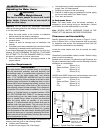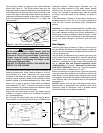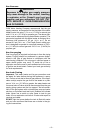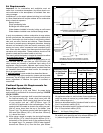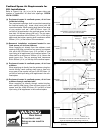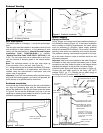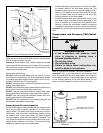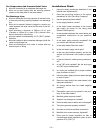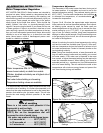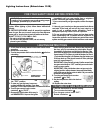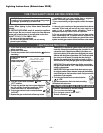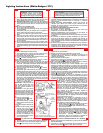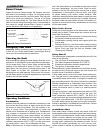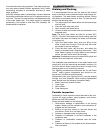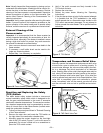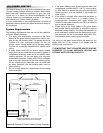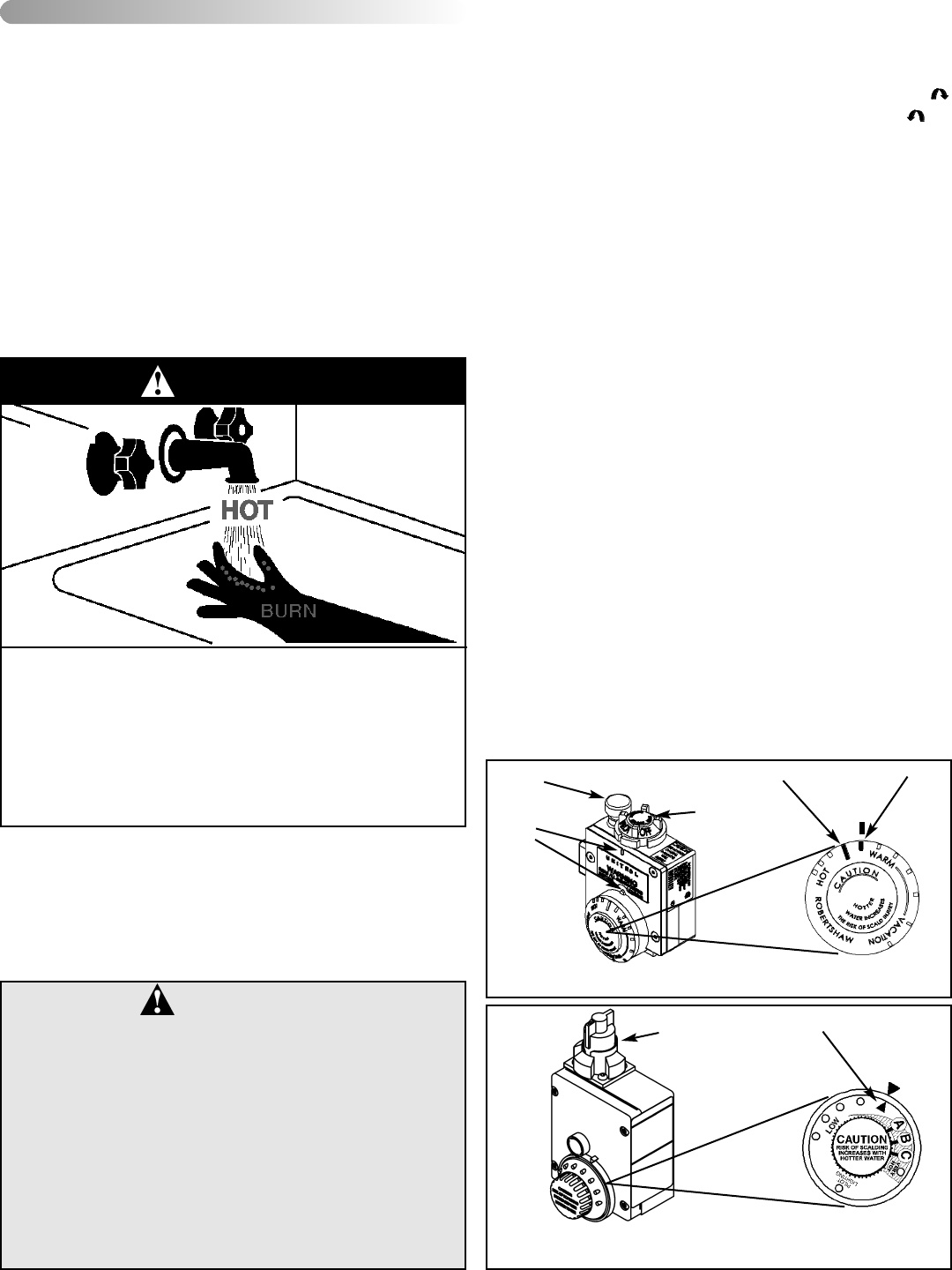
IV) OPERATING INSTRUCTIONS
Water Temperature Regulation
HOT WATER CAN SCALD: Water heaters are intended to
produce hot water. Water heated to a temperature that will
satisfy space heating, clothes washing, dish washing, and
other sanitizing needs can scald and permanently injure you
upon contact. Some people are more likely to be perma-
nently injured by hot water than others. These include the
elderly, children, the infirm, or physically/mentally handi-
capped. If anyone using hot water in your home fits into one
of these groups or if there is a provincial, state law or local
code requiring a specific hot water temperature at the tap,
then you must take special precautions. Never allow small
children to use a hot water tap, or to draw their own bath
water. Never leave a child or handicapped person unat-
tended in a bathtub or shower.
It is recommended that lower water temperatures be used
to avoid the risk of scalding. It is further recommended, in all
cases, that the water temperature be set for the lowest tem-
perature that satisfies your hot water needs. This will also
provide the most energy efficient operation of the water
heater.
Temperature Adjustment
The thermostat of this water heater has been factory set at
its lowest position. It is adjustable and must be set to the
desired temperature setting. The preferred starting point is
49°C (120°F). Turn the water temperature dial clockwise
to decrease the temperature, or counterclockwise to
increase the temperature.
Figures 13a & 13b show the approximate water tempera-
tures produced at various thermostat settings. Short repeat-
ed heating cycles caused by small hot water uses can
cause temperatures at the point-of-use to exceed the ther-
mostat setting by up to 17°C (30°F). If you experience this
type of use you should consider using lower temperature
settings to reduce scald hazards. Should overheating occur
or the gas supply fail to shut off, turn off the manual gas con-
trol valve to the appliance.
Valves for reducing the point-of-use temperature by mixing
cold and hot water are available (see Figure 2). Also avail-
able are inexpensive devices that attach to faucets to limit
hot water temperatures. Contact a licensed plumber or the
local plumbing authority.
Note: During low demand periods, a lower thermostat set-
ting will reduce energy losses and may satisfy your normal
hot water needs. If hot water use is expected to be more
than normal, a higher thermostat setting may be required to
meet the increased demand. When leaving your home for
extended periods (e.g., vacations etc.) turn the temperature
dial to its lowest setting. This will maintain the water at low
temperatures with minimum energy losses and prevent the
tank from freezing during cold weather.
GAS CONTROL
KNOB
PILOT
BUTTON
INDEX
BARS
49°C (120°F) BAR
54°C (130°F) BAR
Figure 13a Robertshaw Gas Control/Thermostat Settings
DANGER
Water temperature over 52°C (125°F) can cause
severe burns instantly or death from scalds.
Children, disabled and elderly are at highest risk of
being scalded.
Feel water before bathing or showering.
Temperature limiting valves are available.
WARNING
Risk of scalding
There is a hot water scald potential if the
thermostat is set too high.
Adjusting the thermostat past the 49°C
(120°F) bar on the temperature dial will
increase the risk of scald injury
Hot water can produce third degree burns
in 6 seconds at . . . . . . . .60°C (140°F)
in 30 seconds at . . . . . . .54°C (130°F)
in 5 minutes at . . . . . . . . .49°C (120°F)
GAS CONTROL
KNOB
49°C (120°F) MARK
Figure 13b White-Rodgers Gas Control/Thermostat
Settings
– 14 –



